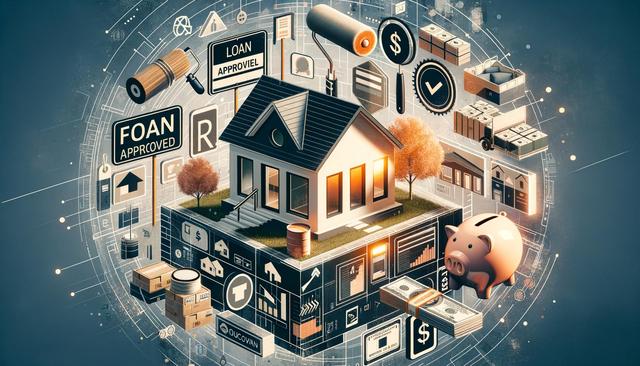Understanding No-Equity Home Improvement Loans
Many homeowners assume that building equity is a necessary step before they can qualify for a home improvement loan. However, several financing options are available that do not require equity in your property. These solutions are especially helpful for new homeowners or those who have recently refinanced and haven’t had the chance to build significant equity. Common types of no-equity renovation financing include personal loans, credit cards with promotional rates, and government-backed loan programs.
When exploring your options, it’s important to consider factors like interest rates, repayment terms, and eligibility requirements. These loans typically rely on your credit score and income rather than the value of your home. While interest rates may be slightly higher compared to equity-based loans, the application process is often faster and more accessible.
Personal Loans for Home Improvement
Personal loans are one of the most widely used options for homeowners who need to fund renovations without equity. These loans are unsecured, which means they don’t require collateral such as your home. Approval is based primarily on your credit score, income, and overall financial stability. Many lenders offer loan amounts ranging from a few thousand to tens of thousands of dollars, depending on your qualifications.
Some advantages of personal loans include:
- Fixed interest rates and predictable monthly payments
- No risk of losing your home if you default
- Quick approval and funding timelines
However, keep in mind that because they are unsecured, personal loans may come with higher interest rates than secured options. Comparing offers from multiple lenders can help you find more favorable terms and lower costs.
Credit Cards and Promotional Financing Offers
Another viable short-term option for financing home upgrades is using credit cards, particularly those that offer promotional financing periods. Some credit cards provide 0% interest on purchases for a set introductory period, often ranging from 6 to 18 months. This can be beneficial for smaller projects or when you’re confident in your ability to pay off the balance within the promotional window.
Here are some things to watch for:
- High interest rates after the promotional period ends
- Possible fees for late or missed payments
- Impact on your credit utilization ratio
Credit cards should be used with caution and only if you have a clear repayment strategy. They are generally not ideal for large-scale renovations but can be useful for smaller improvements or materials purchases.
Government and Community-Based Loan Programs
Federal, state, and local governments sometimes offer home improvement loan programs that don’t require equity. These programs are designed to help homeowners make necessary repairs or energy-efficient upgrades. Options may include FHA Title I loans, energy-efficiency loans, or grants for specific types of projects.
Benefits of these programs often include:
- Low or fixed interest rates
- Longer repayment terms
- Support for low- and moderate-income households
Each program has unique eligibility requirements, such as income limits, credit score thresholds, or the type of improvement you’re planning. Checking with your local housing authority or community development office can uncover resources that may not be widely advertised but offer significant financial benefits.
Online Lenders and Emerging FinTech Options
In recent years, online lenders and fintech platforms have gained popularity for offering flexible home improvement financing solutions. These digital platforms often provide a streamlined application process, faster approvals, and transparency in loan terms. Many also allow you to prequalify without affecting your credit score, making it easier to compare offers.
Features to consider when evaluating online lenders include:
- Loan amounts and repayment terms
- Customer service and support options
- Reputation and borrower reviews
Some online lenders specialize in home renovation loans and may offer tools to help you estimate project costs or connect with contractors. While these platforms can be convenient, it’s still essential to review the fine print and ensure that the lender is reputable and transparent about fees.
Conclusion: Choosing the Right No-Equity Financing Option
Applying for a home improvement loan without equity is entirely possible with the right knowledge and financial preparation. Whether you choose a personal loan, credit card, government program, or online lender, it’s important to match the financing option to your specific project needs and financial situation. Homeowners should take the time to compare rates, understand terms, and plan for repayment to ensure their renovation dreams become a stress-free reality. With careful planning, you can enhance your home’s value and comfort—no equity required.




Leave a Reply